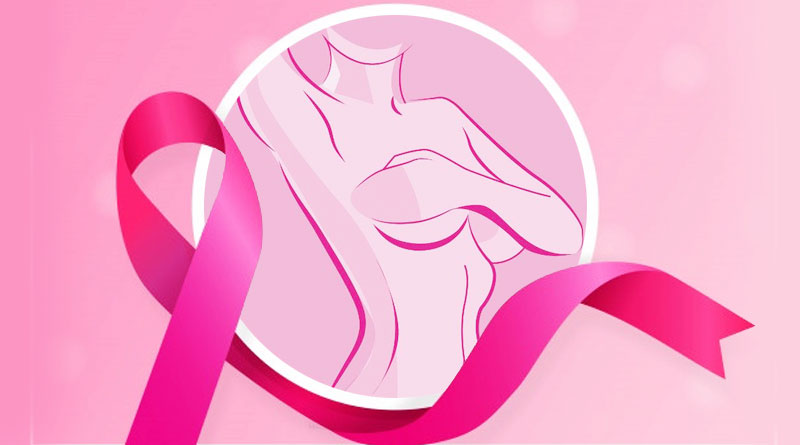National Mammography Day:Early detection is the key to prevent breast cancer
by Dr. Veeraiah Chowdary K, Chief Radiologist, Department, of Radiology, Basavatarakam Indo American Cancer Hospital & Research Institute, Hyderabad
October is the International Breast Cancer Awareness Month. Every year the third Friday in October is celebrated as National Mammography Day which is on October 16th this year. This day is a reminder to all the women that early detection is the best defence to defeat the breast cancer. Mammography is one such technology which can often detect breast cancer before there is any noticeable physical sign.
Breast cancer awareness
Breast Cancer Awareness Month is celebrated annually all over world during the month of October. Take time to get educated on Breast Cancer, learn what can be done to reduce the chances being diagnosed with breast cancer and how can it be diagnosed in the early stage to prevent death due to breast cancer.
Factors that may increase the risk of breast cancer include: Family history of breast or ovarian cancer (mother/sister/maternal grand-mother), smoking, drinking alcohol, increased fast food consumption, obesity, lack of physical exercise, delay in first pregnancy, less number of pregnancies, use of oral contraceptive pills, reduced duration of breast feeding and stress. Majority of the factors are modifiable and women can decrease their chances of being afflicted with breast cancer by maintaining healthy lifestyle, diet and regular excercise.
Mammography
Mammography is a low-energy X-ray based technology to detect calcifications in the breast which is one of the earliest sign of breast cancer. It was first developed by Robert Egan in late 1950 as an innovative method to screen breast for the first time. His contribution began to be known as “The Egan Technique” of examining breast and allowed to detect hard masses within the breast tissue even before the woman could feel it or become symptomatic.
How is the mammography performed?
When a mammography examination performed, each breast is compressed by the mammography unit for few seconds. This compression evens out the thickness of the breast tissue to reduce the amount of radiation absorption by the breast and prevent blurring from motion. Women are discouraged from wearing deodorant, lotion, perfume or talcum powder on the day mammography screening as they may show up as calcification spots on mammogram.
Is mammography a painful test?
Earlier with the conventional mammography unit, the procedure used to be painful or uncomfortable due to tight compression of the breast. But, with the advancements in technologies and availability of 3D Digital Mammography or Tomosynthesis units which are now available in advanced breast cancer care centres, the procedure is said to be pain free, easy to conduct and provides more accurate results.
Need for Mammogram
Breast cancer is the most common type of cancer in women accounts for 14% of cancers in Indian women. Breast cancer is gradually on the rise, in both rural and urban India. A 2018 report of cancer statistics recorded 1,62,468 new registered cases of breast cancer and 87,090 reported deaths. Cancer survival becomes more difficult if they are diagnosed in late stages, and more than 50% of Indian women suffer from stage 3 or 4 of breast cancer at the time of diagnosis. The average 5 year survival after the diagnosis of breast cancer is reported to be 60% in Indian women as compared to 80% or above in the U.S due to lack of awareness, regular mammography screening examination and being diagnosed in late stage.
How effective is mammography?
Early detection thorough mammography screening has successfully reduced the breast cancer mortality rate in the U.S by 40% according to the National Cancer Institute, USA. Thus, once a year mammogram is so effective that it can reveal changes in the breast due to cancer about 2 years before the patients or their doctors can feel the lump manually.
Limitations of Conventional Mammography
If a patient has dense breast tissue, a conventional mammography may have trouble detecting small breast cancers due to overlapping breast tissue. There is very minimal dose of radiation exposure to the breasts, however the dose is well within the U.S. FDA approved limits and equivalent to the 6 weeks exposure to the background radiation present in U.S. And, the benefits of mammogram is much higher than the risks.
Advantages of screening under 3D Mammography or Tomosynthesis unit
3D Mammography or Tomosynthesis is the latest screening tool for breast cancer detection which allows physicians to access multiple thin slice (1mm thickness) images of breast. Thus chances of missing even small cancers or cancers in dense breast tissue are very less likely.
Patient preparation for mammography examination
Mammography should be preferably avoided 1 week prior or during the menstrual period as breast may be tender or swollen during this period due to hormonal changes in the body. So, the best time to undergo mammography is between 7th to 21st days of the menstrual cycle.
On the day of mammography examination, better to avoid deodorant, perfume or talcum powder as they may show white spots similar to calcifications on the mammogram.
At what age Mammography screening should start and how frequently should be done?
Mammography screening for normal risk women should start at the age 40 years and should schedule their mammography appointments once in a year or two years.
For women with high risk of breast cancer (strong family history of breast cancer, BRCA1 or BRCA 2 gene mutation carriers) should start screening at the age of 30 years or 10 years before the family member was detected with breast cancer, alternating with mammography and breast MRI every 6 months.
“Mammography screening plays the key role in early detection of breast cancer and thus saving lives of several women”.




